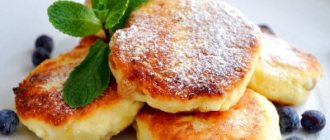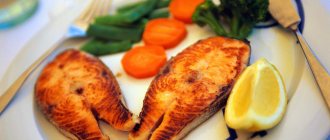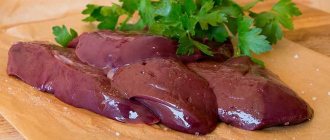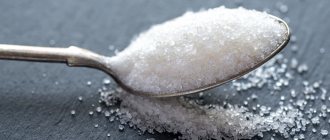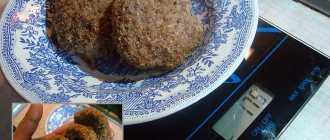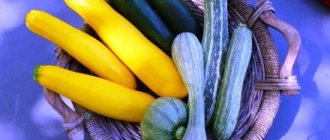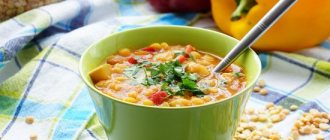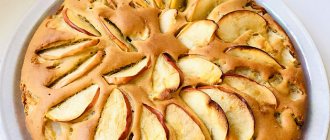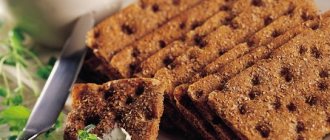Dietary properties:
What calorie content the pies have, what dietary properties they have, all this is of great interest to those who lead a healthy lifestyle and monitor their health and figure. So we will try to answer these questions in the next article.
So here it is:
Baking has always taken pride of place on the table. It is no coincidence that many Russian proverbs and sayings are dedicated specifically to pies, and not to any other dishes. Pies have long been considered a festive dish and a symbol of hospitality, which is why it is said that “a hut is not red in its corners, but red in its pies.”
Our mothers and grandmothers always baked cakes, cookies and pies for the holidays, and each family kept its own time-tested recipes. And although the choice of products was not as large as it is now, the baked goods always turned out surprisingly tasty. Today, a variety of confectionery products can be easily bought in any store, but sometimes you really want to remember the taste of a freshly baked bun, familiar from childhood, or surprise your guests with an incredibly beautiful cake made by yourself.
It is generally accepted that preparing homemade confectionery takes a lot of time, and that is why many housewives bake extremely rarely. Meanwhile, buns, pies, bagels, muffins, rolls can be baked in less than an hour, and from quite affordable products.
In order for the pies to be tasty, you need to prepare the dough correctly. There are two ways to prepare yeast dough - straight and sponged.
The sponge method is used to prepare dough mainly for products with a small amount of baked goods (sugar, butter, eggs) and dough of weak consistency - for pancakes, pancakes, fried pies, etc. The sponge method is used to make richer products.
Approximate layout for 1 kg of flour: pressed yeast 10–40 g, salt 12–15 g, water or milk from 400 to 500 g
The amount of yeast used to prepare the dough depends on its quality and the temperature conditions under which the dough ferments. For example, the worse the quality of the yeast and the lower the temperature, the more of it should be added.
When kneading the same type of yeast dough, the liquid norms may change in one direction or another. Thus, the amount of liquid for pies made from yeast dough can vary from 45 to 55% by weight of flour. This is explained by the degree of moisture in the flour: the more moisture the flour contains, the less it absorbs, and vice versa.
In addition, the drier the flour, the higher the yield of finished products. In accordance with this, the flour consumption rates specified in recipes for baked goods, depending on the moisture content of the flour, should be reduced or increased by an average of one percent for each percentage deviation of the flour moisture content from the norm according to the standard.
To obtain a fluffy product and increase baking, you need to take flour containing 30–40% good gluten.
Products prepared with milk rather than water are more tasty and aromatic, and their crust is shiny and has a good color.
Sugar significantly improves the quality of products, but it, like other raw materials, should be added to the dough strictly according to the norm. If the dough is very sweet, then fermentation slows down; In addition, when baking, the products quickly brown and are poorly baked. If the amount of sugar in the dough is insufficient, the product will hardly develop a golden brown crust.
Fats, softened to the consistency of sour cream, are added at the end of kneading the dough or when kneading it, this improves the fermentation of the dough.
Product calculator
Enter the amount of the product “Fried apples in dough” to calculate its nutritional value
| Property | Meaning | % of normal | |
| Calorie content, kcal | 220,7 | 11 | 11% |
| Proteins, g | 3,3 | 2 | 2% |
| Carbohydrates, g | 36,1 | 14.4 | 14.4% |
| Fats, gr | 8 | 18.18 | 18.18% |
How many calories do they have?
Here's how much:
Naturally, the calorie content of pies depends on the filling and method of preparation.
Pay attention to this table:
Table of calorie content of pies and nutritional value (BJU) per 100 grams:
| Pies: | Bel, gr. | Fat, gr. | Angle, gr. | Cal, kcal. |
| Fried with onions and eggs | 9.0 | 9.6 | 34.0 | 259 |
| With onions and eggs in the oven | 8.6 | 9.1 | 26.0 | 214 |
| Fried with cabbage | 5.0 | 10.5 | 29.0 | 230 |
| With cabbage in the oven | 4.4 | 7.1 | 33.6 | 214 |
| Fried with potatoes | 6.2 | 10.0 | 17.7 | 244 |
| With potatoes in the oven | 4.4 | 2.5 | 35.0 | 190 |
| Fried with meat | 4.7 | 8.8 | 48.0 | 290 |
| With meat in the oven | 12.2 | 5.7 | 35.5 | 245 |
| Rice and egg | 10.3 | 7.6 | 35.0 | 250 |
| With apple | 5.6 | 4.7 | 54.0 | 286 |
| With cherry | 6.9 | 3.7 | 40.0 | 287 |
| With cottage cheese | 11.0 | 19.7 | 21.3 | 307 |
Recipe for Pyshka fried yeast dough. Calorie, chemical composition and nutritional value.
Nutritional value and chemical composition of “Fried yeast dough donuts”.
The table shows the nutritional content (calories, proteins, fats, carbohydrates, vitamins and minerals) per 100 grams of edible portion.
| Nutrient | Quantity | Norm** | % of the norm in 100 g | % of the norm in 100 kcal | 100% normal |
| Calorie content | 292.3 kcal | 1684 kcal | 17.4% | 6% | 576 g |
| Squirrels | 6.5 g | 76 g | 8.6% | 2.9% | 1169 g |
| Fats | 11.8 g | 56 g | 21.1% | 7.2% | 475 g |
| Carbohydrates | 40.1 g | 219 g | 18.3% | 6.3% | 546 g |
| Alimentary fiber | 2 g | 20 g | 10% | 3.4% | 1000 g |
| Water | 38.4 g | 2273 g | 1.7% | 0.6% | 5919 g |
| Ash | 1.285 g | ~ | |||
| Vitamins | |||||
| Vitamin B1, thiamine | 0.112 mg | 1.5 mg | 7.5% | 2.6% | 1339 g |
| Vitamin B2, riboflavin | 0.039 mg | 1.8 mg | 2.2% | 0.8% | 4615 g |
| Vitamin B4, choline | 29.72 mg | 500 mg | 5.9% | 2% | 1682 g |
| Vitamin B5, pantothenic | 0.271 mg | 5 mg | 5.4% | 1.8% | 1845 |
| Vitamin B6, pyridoxine | 0.111 mg | 2 mg | 5.6% | 1.9% | 1802 |
| Vitamin B9, folates | 28.563 mcg | 400 mcg | 7.1% | 2.4% | 1400 g |
| Vitamin E, alpha tocopherol, TE | 5.72 mg | 15 mg | 38.1% | 13% | 262 g |
| Vitamin H, biotin | 1.856 mcg | 50 mcg | 3.7% | 1.3% | 2694 g |
| Vitamin K, phylloquinone | 0.8 mcg | 120 mcg | 0.7% | 0.2% | 15000 g |
| Vitamin RR, NE | 2.0535 mg | 20 mg | 10.3% | 3.5% | 974 g |
| Niacin | 0.956 mg | ~ | |||
| Macronutrients | |||||
| Potassium, K | 83.79 mg | 2500 mg | 3.4% | 1.2% | 2984 g |
| Calcium, Ca | 15.71 mg | 1000 mg | 1.6% | 0.5% | 6365 g |
| Silicon, Si | 2.285 mg | 30 mg | 7.6% | 2.6% | 1313 g |
| Magnesium, Mg | 10.85 mg | 400 mg | 2.7% | 0.9% | 3687 g |
| Sodium, Na | 370.9 mg | 1300 mg | 28.5% | 9.8% | 350 g |
| Sera, S | 41.97 mg | 1000 mg | 4.2% | 1.4% | 2383 g |
| Phosphorus, P | 59.6 mg | 800 mg | 7.5% | 2.6% | 1342 g |
| Chlorine, Cl | 580.06 mg | 2300 mg | 25.2% | 8.6% | 397 g |
| Microelements | |||||
| Aluminium, Al | 599.6 mcg | ~ | |||
| Bor, B | 21.1 mcg | ~ | |||
| Vanadium, V | 51.39 mcg | ~ | |||
| Iron, Fe | 0.789 mg | 18 mg | 4.4% | 1.5% | 2281 g |
| Yod, I | 0.96 mcg | 150 mcg | 0.6% | 0.2% | 15625 g |
| Cobalt, Co | 1.057 mcg | 10 mcg | 10.6% | 3.6% | 946 g |
| Manganese, Mn | 0.4307 mg | 2 mg | 21.5% | 7.4% | 464 g |
| Copper, Cu | 67.47 mcg | 1000 mcg | 6.7% | 2.3% | 1482 g |
| Molybdenum, Mo | 8.832 mcg | 70 mcg | 12.6% | 4.3% | 793 g |
| Nickel, Ni | 1.256 mcg | ~ | |||
| Tin, Sn | 2.97 mcg | ~ | |||
| Selenium, Se | 3.428 mcg | 55 mcg | 6.2% | 2.1% | 1604 g |
| Titanium, Ti | 6.28 mcg | ~ | |||
| Fluorine, F | 41.14 mcg | 4000 mcg | 1% | 0.3% | 9723 g |
| Chromium, Cr | 1.26 mcg | 50 mcg | 2.5% | 0.9% | 3968 g |
| Zinc, Zn | 0.4347 mg | 12 mg | 3.6% | 1.2% | 2761 g |
| Digestible carbohydrates | |||||
| Starch and dextrins | 38.775 g | ~ | |||
| Mono- and disaccharides (sugars) | 0.8 g | max 100 g | |||
| Essential amino acids | |||||
| Arginine* | 0.012 g | ~ | |||
| Valin | 0.017 g | ~ | |||
| Histidine* | 0.008 g | ~ | |||
| Isoleucine | 0.018 g | ~ | |||
| Leucine | 0.022 g | ~ | |||
| Lysine | 0.022 g | ~ | |||
| Methionine | 0.006 g | ~ | |||
| Methionine + Cysteine | 0.008 g | ~ | |||
| Threonine | 0.015 g | ~ | |||
| Tryptophan | 0.004 g | ~ | |||
| Phenylalanine | 0.012 g | ~ | |||
| Phenylalanine+Tyrosine | 0.028 g | ~ | |||
| Nonessential amino acids | |||||
| Alanin | 0.008 g | ~ | |||
| Aspartic acid | 0.016 g | ~ | |||
| Glycine | 0.011 g | ~ | |||
| Glutamic acid | 0.038 g | ~ | |||
| Proline | 0.011 g | ~ | |||
| Serin | 0.014 g | ~ | |||
| Tyrosine | 0.016 g | ~ | |||
| Cysteine | 0.003 g | ~ | |||
| Sterols (sterols) | |||||
| Cholesterol | 6.19 mg | max 300 mg | |||
| beta sitosterol | 22.018 mg | ~ | |||
| Saturated fatty acids | |||||
| Saturated fatty acids | 1.4 g | max 18.7 g | |||
| 12:0 Lauric | 0.001 g | ~ | |||
| 14:0 Miristinovaya | 0.001 g | ~ | |||
| 16:0 Palmitinaya | 0.69 g | ~ | |||
| 18:0 Stearic | 0.453 g | ~ | |||
| 20:0 Arakhinovaya | 0.033 g | ~ | |||
| 22:0 Begenovaya | 0.078 g | ~ | |||
| Monounsaturated fatty acids | 2.645 g | min 16.8 g | 15.7% | 5.4% | |
| 16:1 Palmitoleic | 0.007 g | ~ | |||
| 18:1 Oleic (omega-9) | 2.626 g | ~ | |||
| 20:1 Gadoleic (omega-9) | 0.001 g | ~ | |||
| Polyunsaturated fatty acids | 7.166 g | from 11.2 to 20.6 g | 64% | 21.9% | |
| 18:2 Linolevaya | 6.59 g | ~ | |||
| 18:3 Linolenic | 0.003 g | ~ | |||
| Omega-6 fatty acids | 6.8 g | from 4.7 to 16.8 g | 100% | 34.2% |
The energy value of Pyshka fried yeast dough is 292.3 kcal.
Primary Source: Created in the application by the user. Read more.
** This table shows the average levels of vitamins and minerals for an adult. If you want to know the norms taking into account your gender, age and other factors, then use the “My Healthy Diet” application.
Pies for weight loss:
And further:
How to make good dough?
Before putting the dough, be sure to sift the flour to remove impurities, lumps, and also introduce air - the dough will rise better.
When making a dough or dough, do not pour flour into the liquid, but, on the contrary, dilute the flour with milk or water, stirring thoroughly all the time so that there are no lumps.
Do not let the dough rest - the pies will taste sour. It is enough to stand for 3 hours, but be sure to stay warm.
To make the rice for the filling white and crumbly, add a little vinegar to the water where it is cooked 5 minutes before it is cooked. Drain in a colander and rinse well with cold water.
You almost always need to add hard-boiled eggs to the pie filling. Boil them in salted water so that they do not leak out; if the shell is cracked, at a vigorous boil, then the protein will be hard.
Dependence of calorie content on pies filling
A pie with cabbage, which is high in calories, is far from the most satisfying among similar baked goods. So pies with meat filling will be much more nutritious. Regardless of the type of minced meat, any meat has great nutritional value. Therefore, the calorie content of such pies will vary from 260 to 350 kcal.
Pies filled with vegetables, herbs or onions are “lighter” than meat or fish ones. The calorie content of such vegetable pies varies from 148 to 255 kcal.
Stewed cabbage is the lowest calorie filling
The vegetable filling as a share of the calorie content of the pies ranges from 19 to 45 kcal. At the same time, stewed cabbage is considered the lowest-calorie filling. But fillings with cabbage in combination with mushrooms or eggs will be more filling and, accordingly, higher in calories. Also, a lot depends on the cooking method. When cooked in the oven, the resulting nutritional value of the product is lower.
How many calories are in a pie
On average, the calorie content of pies is 250 kcal per 100 g of product. Of course, this value may change in one direction or another depending on the quantitative and qualitative composition, as well as the method of preparing the pies. In this case, the approximate energy value of the dish is as follows:
- Proteins – 13 g,
- Fats – 7 g,
- Carbohydrates – 33 g.
Pies appeared on the tables of Slavic peoples in the Middle Ages and today are rightfully considered a national dish of Slavic cuisine. The main components of pies are dough and filling, the manufacturing recipe of which directly affects the overall calorie content of the pies. For example, the calorie content of pies with meat is obviously higher than the calorie content of pies with any vegetable filling.
One of the most popular are pies with cabbage and potatoes. They are distinguished by a harmonious, balanced taste, give a feeling of fullness for a long time, are prepared from affordable and familiar products, and at the same time differ slightly from each other in calorie content. The approximate calorie content of a pie with cabbage is about 190 kcal per 100 g of product, while the average calorie content of a pie with potatoes is 270 kcal.
Of course, the calorie content of baked pies will be lower than the calorie content of fried pies (about two times). If the calorie content of baked pies does not always reach 200 kcal, then the calorie content of fried pies exceeds 350 kcal per 100 g of dish. As with any fried food, their consumption should be kept to a minimum. However, baked pies should not be considered a healthy and dietary dish.
The pies traditionally baked by our compatriots are a high-calorie dish with a fairly high glycemic index, which means that eating pies in large quantities stimulates appetite and leads to a sharp increase in body weight.

